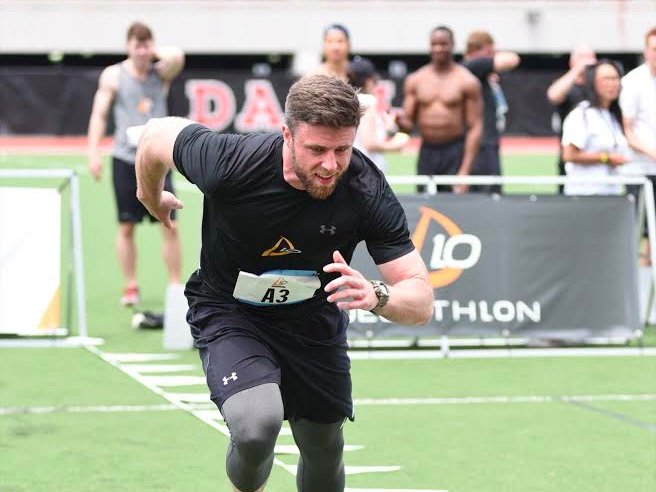“All the events are explosive, short-distance types of events, but at the same time it is very long day.” —Carson Rohrbaugh, Bank of America Merrill Lynch

Carson Rohrbaugh
“Everybody who does it, they’re not the type of people that don’t work out until they have something like this. We’re all guys who go to the gym, who play pickup basketball on Saturdays. I recently got into cycling about a year ago.
“With the new year, you start to focus your efforts a little bit more specifically toward the event. As you start to send out your fundraising emails, around March, you really start kicking into gear.
“Right now, it is probably three or four days a week, mostly just going to the gym for lifting and running, and then in March, I’ll end up at the point where I’m there five or six days a week, lifting, running, and then I’m cycling with a couple of 20- to 3o-mile rides.”
“All the events are explosive, short-distance type of events, but at the same time it is a very long day. Going out for hour-long bike rides is helpful for the long day.”
“I went to an exercise at Tone House, and it was by far the hardest class I have ever done. It was comparable to college-football workouts. It’s a full hour of full-body explosive training: sprinting, ropes, rowing, pushing sleds, no breaks. You can tap out for a few minutes if you want to. It’s smaller, and there is a team aspect to it.
“I started doing yoga maybe doing one or two days a week last January. You sit at a desk all day, and you’re training a bunch, and staying flexible in your whole body is huge, especially in this event. The setback of pulling something knocks you out for two or three weeks.
“Some guys can go train six or seven days a week. Those are fine, but I really try to listen to my body, and if I am feeling worn out, I’ll take time out of my schedule.”
“I think a lot of this crowd works out in the morning or at the weekends. You have more control of your schedule.”













